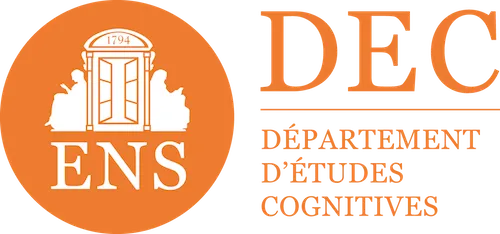

LMS and professional training: a 2026 overview of a fast-evolving market
Introduction — Professional training, between golden age and digital hangover
It's not a scoop: the vocational training market is progressing from foot to the floor. The explosion of e-learning (thanks to Covid), the generalization of LMS and the advent of artificial intelligence changed everything — or almost everything. In 2023, France invested 55 billion euros in vocational training, or nearly 2% of GDP¹. Globally, the LMS market is valued at between 23 and 26 billion dollars in 2024, and is expected to reach between 70 and 102 billion by 2030-2033². In other words, digital learning is no longer a trend: it is now an industry in its own right.
If we zoom in on companies, the switch is almost total: 87% of French organizations have integrated e-learning into their training system³. On paper, it is therefore the golden age of digital learning. In reality? It's a bit more nuanced, of course. Non-tutored training still has a 10% completion rate4, 60% of structures cite the lack of time, budget or skills as the main constrain5, and on the CPF side, employer contributions are not taking off: they represent only about 1% of total amounts,6
In 2025, vocational training is therefore experiencing a paradox: never has it been so strategic, so technological... and so human to rethink. It is this paradox that we are going to try to decipher here, key figures, major trends and weak signals in the end. Not to do yet another barometer (we'll spare you the incomprehensible graphs), but to draw up a lucid and well-founded overview of a sector in full (r) evolution — between market consolidation, the maturity of AI and the return to favor of face-to-face.
Let's go!
1. A hypergrowing LMS market, and not only in numbers
Behind the somewhat cold acronym of LMS (Learning Management System) hide the platforms that make the digital learning machine work: Moodle, 360Learning, Docebo, Cornerstone OnDemand, TalentLMS, or even more recent players such as Rise Up or Didask. These tools make it possible to create, distribute and follow online training courses — the beating heart of new generation vocational training.
As announced above, in 2024, the global LMS market is estimated at between 23 and 26 billion², and projections even count on 70 to 102 billion by 2030-20333. As far as the old continent is concerned, the market share is close to 8.4 billion dollars in 2024, to reach more than 41 billion by 2033 (for comparison, the budget of our National Education is 86 billion). Double-digit growth, driven by the accelerated digitalization of training and the increasing integration of AI into educational tools.
Cocorico, France is among the top 3 European markets for the adoption of LMS, with an estimated growth rate of corporate e-learning of 20.5% for the period 2024 - 2031, higher than the continental average8. This dynamism can be explained in particular by our level of digital skills: nearly 60% of French people now have an advanced digital foundation9, and we can be happy about that.
But the most striking thing is that LMS are no longer reserved for large accounts. The arrival of lighter cloud solutions and flexible SaaS models has democratized access to these tools. SMEs, associations and public organizations can now deploy a platform without heavy infrastructure or pharaonic budget. The cloud now captures 67% of market revenues, relegating “on-premise” solutions to 33% ¹.
In a sector long dominated by mastodons, the hierarchy is changing. Some giants are consolidating through spectacular buyouts — for example, Bain Capital acquired PowerSchool for $5.6 billion in October 2024¹, while Clearlake Capital, which already owns Cornerstone OnDemand, is continuing to expand. Others, unable to keep up, were swept away: Anthology (ex-Blackboard) filed for bankruptcy in 2025 with 1.7 billion debt¹ ². As in highlander, there can only be one left... or rather a few capable of reinventing themselves with each technological wave.
This renewal benefits a new generation of actors, like Didask, who are more agile and rooted in real uses: cloud-native platforms, simple integrations, embedded AI, careful educational design and human support at the heart of the experience. The era of the LMS “safe” for content is over. Businesses are now looking for living tools that can support skills development rather than simply hosting dusty SCORM modules.
2. AI in training: from personalization to production
We've been talking about it for 2-3 years, but this time, artificial intelligence has really found its way into vocational training. No more the hype of “ChatGPT will revolutionize everything”: in 2025, we entered the era of concrete uses. AI is no longer a living room gadget, it is a solid technological brick that is integrated into the heart of LMS, authoring tools and digital learning platforms.
According to Research.com, nearly 47% of LMSs already incorporate AI-based functionalities¹, and 82% of organizations plan to increase their investments in this area by 2025¹. Businesses understood that the challenge was no longer “to have AI”, but to know where it really brings educational value.
The results, on the other hand, are starting to speak. LMS platforms equipped with AI show an average of 26% more learner retention and a 45% increase in the effectiveness of training programs¹. At the same time, L&D teams save up to 30% of time on administrative management and content creation¹, and let's say it, it's huge. In short, AI is finally taking care of what nobody liked to do — and frees up time for what matters: pedagogy.
Because this is the turning point: AI does not replace trainers, it increases them. It allows them to create more quickly, to personalize better and to control more finely.
Use cases are multiplying:
- automatic generation of modules, quizzes, and other teaching methods from internal resources,
- creation of individualized courses according to the profile and performance of the learner,
- predictive analysis of completion rates and abandonment risks,
- instant translation and contextualization of content according to the position or language.
Clearly, AI transforms the LMS into a real educational co-pilot, capable not only of adapting the experience in real time but also of making educational recommendations to designers - a strong point of Didask in fact. A silent but profound revolution, which is changing the way in which training is designed and disseminated.
And get ready, the movement is only getting bigger. The global market for AI applied to education is valued at 5.9 billion dollars in 2024, and is expected to reach more than 32 billion by 2030, i.e. an average annual growth of 41% ¹, a figure that makes a startup pale with envy. In other words, digital learning has comfortably settled into a new era, where data, personalization and creativity go hand in hand.
Be careful not to fall into the “magic AI” trap. And yes, the best results do not necessarily come from the most automated platforms, but from those that have been able to find the right balance between technology and pedagogy. As always, it's the way you use it that makes the difference: a good trainer with a well-configured AI will remain more effective than an ultra-connected LMS without an educational vision.
3. Blended, a safe bet: when the face-to-face takes on colors
Four years after the all-remote frenzy, face-to-face is slowly coming back to the forefront. Like companies that call their teams back to the office, training managers are rebalancing their systems. After the “everything online” imposed by the pandemic, we are returning to a more hybrid pedagogy, where human contact resumes its rights.
According to the ISTF, 60% of French companies now offer distance or hybrid training systems, compared to 40% in person pure¹. The model of ”Blended Learning” — this clever mix of face-to-face, virtual classes and online modules (the expression blended not only refers to whiskey) — is establishing itself as the enduring standard of modern digital learning. In 2024, the distribution of educational methods in France is balanced: 40% pure face-to-face, 40% mixed, 20% full remote¹.
This return to face-to-face does not mean a rejection of digital technology, far from it. Above all, it reflects a maturation of uses: companies have understood that an e-learning module does not replace a discussion, and that a good device must alternate between moments of transmission, practice and exchange.
And the numbers speak for themselves. Also according to ISTF 2025, tutored programs reach a completion rate greater than 60%, when 58% of non-tutored programs do not exceed 10% ¹. Human support therefore remains an essential success factor in online training. In other words: an LMS without trainers or tutors around is a bit like an electric guitar without an amp, it doesn't sound very loud.
Regardless of the supporters of digital and face-to-face learning, blended learning is still emerging as a model of efficiency, but also of realism. It meets the constraints of organizations (time, budget, geographical dispersion) while maintaining the essence of pedagogy: the relationship. How coalitions can sometimes be effective.
4. Microlearning, mobile and gamification: learning without (too) dropping out
At a time when the average attention of an adult rivals that of a goldfish (eight seconds according to some studies), the microlearning And the Mobile learning are continuing their conquest of the crown of the king formats of digital learning than ever.
They respond to a simple reality: companies need productive and constantly “up to date” employees, which means that these same employees need to be trained quickly, well, where and when they need it to remain productive.
The mobile learning market is already worth 76 billion dollars in 2024, and is expected to reach 230 billion by 2029¹. Growth fuelled by the massive adoption of smartphones - this is not very new - but also by the rise of Learning in the flow of work — this idea of learning as you work, without breaking with work - and that's much more innovative.
Microlearning is following the same trajectory: valued at 1.55 billion dollars in 2024, it is expected to reach 1.80 billion in 2025, with an annual growth rate of 13.5% ² But beyond the figures that make you dizzy, it is the educational effectiveness that seduces. In fact, short, targeted and accessible courses on mobile have a completion rate of up to 80%, compared to 20 to 30% for traditional e-learning²¹. Knowledge retention is 25 to 60% higher, and learner satisfaction is at an all-time high (up to 94% according to some studies²²).
In other words, the shorter it is, the more good it is for learning.
Another motivational lever in the wind: gamification.
The idea is not new — making learning more engaging thanks to game mechanics, hello to the serious game wave — but its impact is being confirmed. In 2024, the global market for gamification applied to training represents more than 15 billion dollars, and is expected to triple by 2029²³. The results are up to par: commitment multiplied by two, productivity increased by 50%, and performances improved by 35 to 90% depending on the contexts²4,4. Obviously, it is on the side of this concept of “context” that the difference will be played out.
Nevertheless, learners love to play, especially when it allows them to learn without realizing it. And while some companies still abuse badges and points, the best approaches rely on narrative scenarios, collaborative challenges or instant feedback — in short, on intelligent gamification, in the service of pedagogy and not the short-term motivational gimmick.
These short, mobile and fun formats have in common that they reconcile performance and the pleasure of learning. They do not replace long programs or blended training courses, but they often become their “link”: the short motivational shot between two denser sessions.
Above all, they embody a conviction shared by all those involved in training: ten well-designed minutes are better than ten hours that are poorly digested. A mantra that the Didask LMS has applied since its inception.
5. Budgets & devices: the big gap between collective and individual
If there is one area where France does not do things by halves, it is that of vocational training. With 55 billion euros invested in 2023, or nearly 2% of GDP¹, France is a European funding champion. And this dynamic is not new: since 2014, business spending has increased by more than 70% ²,5.
But behind this national generosity there are two very distinct realities: that of companies, which finance the development of their employees, and that of individuals, who self-train thanks to the CPF (Compte Personnel de Formation).
On the business side: a massive but unequal effort
Companies devote an average of 3.7% of their payroll to training, well in excess of legal obligations (0.55% for small businesses, 1% for structures with more than 11 employees) ²,6. A strong signal: training is no longer perceived as a burden, but as a strategic investment. So much the better!
But not all sectors are in the same boat. Health and finance are showing massive adoption rates, driven by regulatory obligations (compliance, continuous certifications), while the industry is banking on the development of digital skills to remain competitive. A PWC/Syntec study also highlights that 70% of industrial companies identify digital technology as a key performance driver, and 75% as a major transformation challenge²7. May all other sectors do the same.
On the individual side: the CPF, a popular but misaligned tool
At the same time, the CPF is continuing to expand, with 1.3 million courses financed in 2024 for a total of 2.1 billion euros committed² The system, accessible to all working people, is a great democratic advance: everyone can learn about the subject of their choice, without going through their employer. Let's also recognize a nice simplification since the DIF years for those who knew them.
But that's also where the problem lies. Because while the CPF is a success in use, it is a little less so on a strategic level. The most requested courses always concern the B license, the motorcycle license (we all know someone who did it), English, the skills assessment or the creation of a business ². In other words, themes that are often far removed from real business needs. And on the employer side, involvement remains low: only 1% of CPF budgets come from employer contributions,6 because yes, your company can extend your package.
Result: the CPF works, but in parallel with the system. It responds more to an individual logic of emancipation rather than to a collective logic of adaptation to the labor market, which is less in the direction of companies.
The real challenge of the next decade will undoubtedly be to reconcile these two dynamics: to allow everyone to choose their path, while aligning training efforts with the strategic needs of businesses.
6. Trends 2025—2030: towards smarter and more humane training?
In 2025, vocational training has clearly changed its face, and it's not thanks to makeup. The time when employees were “trained” two days a year is well and truly over.
Now, the challenge is no longer to train on an ad hoc basis, but to create a culture of continuous learning. And that's the whole meaning of LIFOW — Learning in the Flow of Work: learning in the flow of work itself, at the moment when the need arises, without breaking with the reality of the job.
1. LIFOW, a modern heir to AFEST, and boosted by AI coaches
The concept extends the logic of AFEST (Workplace Training Action), which already consisted of learning “by doing.” But where AFEST remained supervised and often limited to certain professions, LIFOW (which is more an approach than a device) integrates learning into daily professional life, supported by data and artificial intelligence. We are moving from planned training to integrated, more agile and more contextualized training.
The LMS and LXP become the catalysts of this approach: they recommend relevant content, analyze skills needs in real time, and offer micro-training courses directly in the work tools.
It is in this logic that AI coaches emerge, a new figure in daily learning. These intelligent assistants integrate directly into work environments — Slack, Teams, CRM, Intranet, etc. — and allow each employee to learn “on demand”. Need a reminder about its product range before a sales interview? From express training in commercial arguments? A micro-module on conflict management? The AI coach responds, contextualizes and trains, just like an expert trainer available 24 hours a day. It's a silent revolution: training becomes conversational, personalized and immediate, without even opening your LMS.
Didask, for example, has developed its own AI coach to offer learners a tailor-made educational dialogue, based on principles of cognitive science and ultra-targeted training scenarios. With these coaches, we are definitively leaving the “programmed course” paradigm to enter that of continuous support, at the crossroads of performance and pedagogy.
2. Competence at the heart of the system
Another major change: the transition from diploma to competence as a unit of measurement (and we are entitled to say “Finally!”). The most advanced companies are now structured into “skills-based organizations”, capable of mapping their skills, identifying differences... and managing courses accordingly!
The World Economic Forum estimates that 39% of key skills will have changed by 2030³¹, and that 77% of employers will implement programs from upskilling Or of Reskilling³¹. This logic of skills is also reshuffling the certification cards: digital badges, micro-skills frameworks and modular certification courses are gradually replacing “catalog” training courses and this is not about to stop.
3. Analytics, the lifeblood of ROI
Measuring the real effectiveness of a training system remains a headache, but learning analytics is progressing quickly. The global market for Learning analytics is estimated at 14 billion dollars in 2025 and is expected to rise to more than 37 billion by 2030, with an average annual growth of 21% ³². The most advanced LMS and LXPs exploit and will make better use of data to prove ROI of training, it is a legitimate request from businesses, by linking learning and business performance. We are thus moving from a reporting logic (“x hours of training completed”) to an impact logic (“x skills acquired and mobilized”).
4. The trainer increased, not replaced
Finally, one of the strongest trends is the revaluation of the human role in an increasingly automated environment. AI can speed up production, recommend content and monitor progress, but it will never replace embodied pedagogy, the ability to give meaning, to encourage, to remove obstacles.
The most successful companies now combine technology and human support: tutoring, mentoring, animation of learning communities, personalized feedback. It is undoubtedly this subtle combination — between AI, data and empathy — that defines the “augmented” training of tomorrow.
Conclusion — The era of continuous, truly continuous learning
As we have seen: the digital learning market has almost reached maturity. LMS platforms are becoming more professional, AI is finally becoming useful, formats are diversifying, and the boundaries between work and training are blurring. But behind the numbers (and there have been a lot of them sorry), the trends and the acronyms, one thing is certain: vocational training is no longer an event, it is a living ecosystem.
Tomorrow — or indeed even today —, learning will no longer necessarily involve a “course”, a “module” or a “virtual classroom”. Learning will be directly involved in our tools, our exchanges, our daily missions. Thanks to approaches such as LIFOW, microlearning, and AI coaches who support employees in the workflow, we now train on demand, when the need arises.
The role of training platforms like Didask (and of all the actors who rely on pedagogy based on science rather than on the buzzword) then becomes essential: putting meaning and effectiveness back at the heart of digital learning, by reconciling technological power and educational requirements.
The revolution is no longer that of tools, but that of uses — which dictate the path of tools to follow. If we had to summarize this (r) evolution in one sentence, we could say that the training no longer “follows” — it happens. And long live life.
sourcing
- France Compétences — Publication of the 2023 report on the use of training funds
- Grand View Research — Corporate Learning Management System (LMS) Market Report 2024—2033
- Callimedia — E-learning figures and trends France and the world
- The Entrepreneur in You — E-learning Statistics 2024
- WeUp Learning — 2024 Training Barometer
- Digiformag — CPF 2024 figures
- Facts & Factors — Global LMS Market Report 2024—2033
- Facts & Factors — Europe e-learning market forecast
- European Commission — Digital Economy and Society Index (DESI) 2024
- Grand View Research — Corporate Learning Management System (LMS) Market Report 2024—2033
- Bain Capital — Acquisition of PowerSchool, October 2024 (PR Newswire)
- ListedTech — Blackboard/Anthology bankruptcy report, September 2025
- Research.com — Global LMS Market & AI Integration Report 2024
- PwC — AI Investment in Learning and Development Survey 2025
- Gartner — The Impact of AI on Corporate Training 2024
- Forbes Advisor — AI in Education Market Growth 2024—2030
- ISTF — Digital Learning Barometer 2024
- ISTF — 2025 Digital Learning Barometer
- Mordor Intelligence — Mobile Learning Market Report 2024—2029
- Future Market Insights — Microlearning Market Outlook 2024—2034
- Shift Learning — e-Learning Engagement and Completion Statistics 2024
- Vouchfor — Corporate Microlearning Performance Report 2024
- Mordor Intelligence — Gamification in Education Market 2024—2029
- MDPI — Impact of Game-Based Learning on Training Performance 2024
- Training Management — Business Expenditure: Yellow Budget 2025
- France Compétences — 2023 report on the financing of vocational training
- PwC/Syntec Numérique — Study on the digital transformation of the industry
- MAformation — CPF 2024 report
- IBM/MaFormation — The most funded courses via the CPF
- Info Center — LIFOW, a new stage in digital learning
- World Economic Forum — Future of Jobs Report 2025
- Mordor Intelligence — Learning Analytics Market 2025—2030
Make an appointment directly with our eLearning experts for a demo or simply more information.












